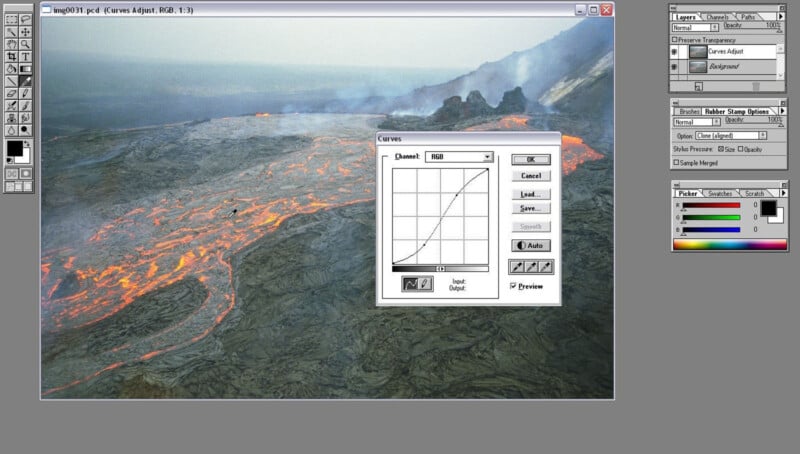Adobe Photoshop, Most Influential Image Editing App Ever, Turns 35
![]()
Happy birthday, Adobe Photoshop. The world’s most famous photo editing software turns 35 years old today, and Adobe is marking the occasion by looking back at landmark moments in Photoshop’s illustrious history.
No matter how photographers feel about Adobe or Photoshop, there is no denying its influence on photography. The software is so ubiquitous in a photographer’s toolkit that its name has become a verb. When someone says an image is “Photoshopped,” everyone knows what that means. Much like a bandage is a Band-Aid, an MP3 player was an iPod, and to the NFL’s chagrin, any tablet is an iPad, there’s no mistaking what it means to “Photoshop” something, whether or not Photoshop was the application of choice. That said, for most professional photography work, there’s a pretty good chance Photoshop was used.

Photoshop’s Early Years
While brothers Thomas and John Knoll developed what would become Photoshop in 1987 and sold the license to Adobe Systems Incorporated the following year, Photoshop 1.0 did not hit the market until February 19, 1990. If photographers think they’ve got it bad now, Photoshop 1.0, which was exclusively available for Macintosh, retailed for $895. In today’s dollars, that’s over $2,200.

At this time, the Knoll brothers received a royalty for each copy sold, an arrangement that persisted until they sold the rights to Adobe for a cool $34.5 million in 1995.
When Photoshop 3.0 arrived in 1994, it brought with it layers, a “game-changing feature that allowed users to separate and manipulate different elements of an image independently,” as Adobe describes it. This feature has remained integral to Adobe Photoshop ever since and “set a new precedent for digital design workflows.”
In 1995, Adobe took layers further by adding Adjustment Layers, Blend Modes, and Layer Masks. These enabled photographers and other digital artists to adjust brightness, contrast, and color without changing the original image. Non-destructive editing, like layers, was a groundbreaking addition to the early Photoshop that has become standard in digital photo editing workflows.

Going Mainstream and Becoming Better for Photographers
While Photoshop carved out a strong, passionate user base in its early years, it wasn’t until Photoshop 5.0 in 1998 that it gained traction with a broader audience. New features and tools like the History Panel and Layer Effects made Photoshop 5.0 more user-friendly and accessible, lowering its barrier to entry. More users, including those in advertising, print media, and the burgeoning digital media landscape, could use Photoshop for their creative work.
Although it’s easy to believe Adobe Camera Raw (ACR) has just always been part of Photoshop, it hasn’t — it has just been there for a very long time. When Photoshop became part of the then-new Adobe Creative Suite in 2003, Adobe integrated ACR into Photoshop. Between this new non-destructive RAW image editing inside Photoshop and the healing brush tool that arrived the year prior, Adobe Photoshop quickly became an even more powerful platform for digital photographers.

Another photographer-friendly innovation was Adobe Photoshop Lightroom’s arrival in 2007. Adobe Photoshop Lightroom, now known as Lightroom Classic, launched 17 years to the day after Photoshop 1.0 and completely transformed the digital photography landscape.
The Age of Automation
Following the controversial, albeit financially lucrative, move to ditch one-time purchases and lifetime licenses in favor of Adobe Creative Cloud subscriptions in 2013, Adobe continually added new features and tools to Photoshop. Over the past decade, machine learning and artificial intelligence have played key roles in Photoshop’s development. Highlights include Select Subject in 2018 and Generative Fill in 2023. AI has also given birth to features like Neural Filters, automatic masking, and (mostly) improved removal and content-aware fill tools.

“While it was fun to commemorate Photoshop’s 35th birthday and reflect on how far we’ve come, it’s more exciting to look forward and shape the future of creativity with you, our community,” Adobe writes. “We remain committed to building products that empower you to create anything you can imagine. Your passion and feedback fuel product innovation, so we hope you’ll continue this journey with us.”
Image credits: Featured image by © Jeff Schewe.